United States president John F Kennedy once said, “In the Chinese language the word ‘crisis’ is composed of two characters: One represents danger and the other represents opportunity.”
Although linguists may debate the accuracy of that famous quote, there is little doubt that today Formula 1 faces a watershed instigated by the Covid-19 Coronavirus, one that represents both an existential danger and a timely opportunity to reinvent itself. The quote brings with it a touch of irony, as the pathogen was originally discovered in China, which was also the first host to “postpone” its grand prix.Much has been written about the subsequent disruption and rightly so, as an analysis of Formula 1’s share price (FWONK) shows. When Liberty Media completed its purchase of F1’s commercial rights in January 2017, the stock hovered at $28.00, hitting a peak of $48.00 three years later. On 17th March FWONK hit a low of $18.84, having traded at $46.49 a month earlier – a drop of 60% in 30 days.
In comparison, during the same period NASDAQ Inc, the exchange upon which F1 is listed, fell 20%, proving how sensitive F1 is to Covid-19. It is not alone: Renault market capitalisation dropped 53%, Daimler’s Frankfurt’s listing by 45% and Honda’s by 30%. Significantly, Ferrari’s dropped just 25% during the same period – demonstrating that luxury can be resilient. On the flip-side, Aston Martin fell 57%. Note: these are guideline statistics only.
Market capitalisation – the total value of all a company’s shares – is merely an indicator of a company’s performance and perceptions of its earning potential. There is little doubt the share will rebound as and when F1 and the rest of the world emerges from Covid-19’s shadow. But its recent halving shows how seriously the markets view F1’s uncertain future. Thus, Liberty’s imperative is to talk up the sport’s prospects in the face of the crisis.

Carey reiterated that the 2020 chassis would be carried over to 2021, with a potential freeze on development of further components after this year. This was announced last week after a conference call of major players including team principals – save, perversely, Mercedes F1 and Racing Point’s bosses, who sent their lieutenants – plus F1 senior management and FIA officials.
Although not specifically alluded to, it is believed the 2021 sporting regulations – as announced last October and variously “clarified” to teams since – will still apply, being amended only where absolutely necessary to accommodate the largely carried-over technical regulations. This should provide appreciable operational savings, which could prove crucial given the financial disruptions caused by Covid-19.
Advert | Become a RaceFans supporter and
Significantly the teleconference decided that, “The introduction and implementation of the [new] financial regulations will go ahead as planned in 2021, and discussions remain ongoing between the FIA, Formula 1 and all teams regarding further ways to make significant cost savings.”
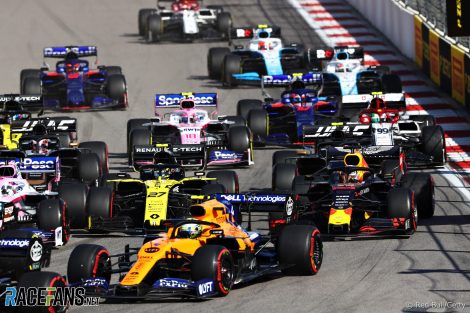
For clarity: with the financial regulations only due for introduction in 2021, the FIA and F1 are powerless to invoke restrictions on design and development this year, when some serious spending on new-gen cars was on the agenda ahead of their 2021 introduction. Then came Covid-19, which turned F1 upside-down.
Thus, one of the main fears for F1’s new era, namely that the ‘big three’ would carry their budgetary advantages into 2021 (and beyond given their momentum), has been largely allayed. Why “largely”? Because the new regulations were published at the end of October 2019 as per FIA rules, teams have worked on concepts since, and this trio is known to have allocated considerable resources to their designs.
With the delay confirmed, there is a relatively easy work-around: Technical working group meetings can be held, but no clarifications, updates or technical directives issued until the end of October this year (or even later), putting brakes on development. Of course, some teams may continue to undertake speculative studies, but given the effects of Covid-19 on income, such activities would be sheer folly.
Equally, freezing development, even partially, of existing cars from now through to the end of 2021 should reduce the advantages of front-runners, who generally gain as the season progresses through having year-long spending power. For example, last year Ferrari gained approximately a second per lap – an eon in F1 terms – over powertrain customer Alfa Romeo during the course of the season.
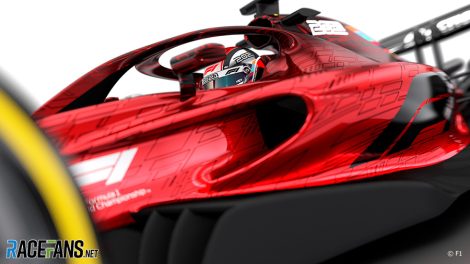
Therefore, it is crucial that every attempt is made to ensure close racing via a development freeze. The flip-side is that teams are unable to develop any recalcitrant cars out of trouble. Hence the suggestion from a rival that Ferrari’s chassis cannot lack speed despite comments to the contrary during pre-season tests, or the Scuderia would surely not have agreed to a freeze.
The rules change may play against the ‘clone car’ teams. Carrying over chassis and restrictions could ‘freeze’ out any advantages, perceived or actual, enjoyed by such as Haas, Racing Point and AlphaTauri, whose cars bear obvious resemblances to Ferrari, Mercedes and Red Bull designs respectively, whether based due to openly acquired technology, copied design, or parts sharing – in that order.
Advert | Become a RaceFans supporter and
How so? ‘Clone’ teams rely on previous year’s designs and technologies from their respective ‘mother teams’, so by 2021 their chassis will effectively be two years old rather than one, and thus are likely to have less development potential. That should further close up the midfield, though perhaps not enough to meet the expectations of fans.
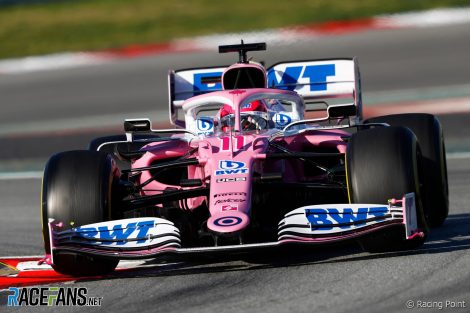
Although this structure is far from optimal, it at least provides independents with a fighting chance. It will continued to pay (reduced) bonuses to the major teams, but crucially all competitors will qualify for a bonus payment subject to current performance, not purely on their historic value.
Where there were fears that the negotiation process, already well advanced but with a few sticking points mostly raised by the majors, would be relegated to the backburner once the season got under way, now that shutdown is imminent and most forms of travel banned, the sport’s main players have absolutely no excuses for not getting the process sorted before racing resumes.
Given the upheaval across the world, a strong case can be made that budgets should be cut from $175 million to maximum $125m, being an adjustment for the reduced team income, whether from Liberty, sponsors or partners and/or drivers, as the economic realities of Covid-19 hit every aspect of F1, from race through TV contracts to advertisers, gate income and state subsidies. Any wonder FWONK is down 50%?
In fact, even $125m could be considered generous: Teams are restricted in terms of engine, gearboxes, tyre usage, aerodynamic/CFD runs and race crew numbers, while costs are already capped for engines. These restrictions will be further tightened from 2021. Thus, the actual costs of designing, building and racing two cars during a season are largely the same, whether for Ferrari, Renault or Williams.

So why keep a $175m cap in these uncertain times? The original figure was agreed as a sop to the majors, who would otherwise need to downsize massively – but tough times call for tough decisions, and F1 faces arguably the toughest time in its 70-year existence. Folk point to the 1955 Le Mans disaster in which Pierre Levegh’s Mercedes was launched into a crowd, killing over 80 spectators, and prompting widespread calls for a ban on motorsport. Then as now, the sport faces an existential threat.
Where pre-Covid-19 at least two teams were on F1’s endangered list, that number is growing and will continue to do so unless F1 acts fast. Failing that, the sport could eventually find itself down to two or three teams: Ferrari, Mercedes and possibly Red Bull. Throw in the odd clone and F1 has six teams maximum (12 cars) – the minimum for a championship, and 25% down on contractual guarantees of 16.
Go ad-free for just £1 per month
>> Find out more and sign up
Three weeks ago Mercedes F1 outlined its sustainability plans, with commercial sustainability being at the heart of the programme and the $175m cap much-trumpeted. If “a week is a long time in politics” – tomorrow another famous political quote – it is an age in the present situation. One wonders how the Daimler board now feels about the budgets of F1 – average $10m per weekend for two cars – as team partners downsize or exit and car markets shrink.
Reducing budget caps to real-world levels and waiving that ridiculous $200m ‘anti-dilution’ payment for new teams (regardless of how it is soft-soaped, it is included in draft contracts) will ensure F1 attracts new teams, in turn adding to the spectacle and ensuring a healthy, sustainable sport. All the more reason, then, to review Concorde clauses during F1’s current idle time.
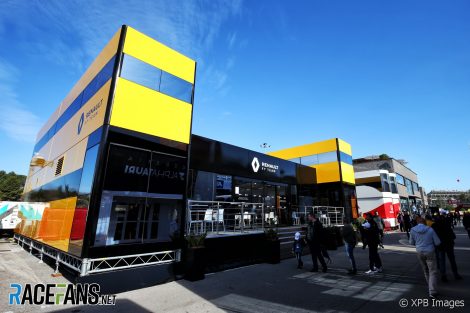
Although there was defiance during pre-season testing about mooted plans to ban hospitality ‘palaces’, these too look unsustainable in the new world. As F1 budgets are reduced, so will marketing and hospitality expenditure. How can F1 teams justify sending up to 20 trucks each across Europe every fortnight between May and September simply to provide a temporary base for teams (and dwindling numbers of guests)?
Covid-19 will extract a price from F1 whether it likes it or not. All organisations face the urgent need to adapt. Those that do will emerge stronger and better equipped to face future challenges and one can only hope that F1 counts itself amongst those entities.
The first signs of welcome change came last week with the announcement that teams had waived their rights to approval of changes to the calendar, effectively permitting Liberty to act as it sees best in the interests of F1 (and its income); the second with news that teams are prepared to co-operate on ventilator projects – proving that teams can unite for the common good and staff can be deployed elsewhere as budget caps bite.
Do not be surprised if Liberty (in conjunction with the FIA) and the teams are currently in discussions over budget cap reductions, and if they aren’t, they certainly should be. Thus a fitter, leaner and more sustainable sport can emerge from the shadows of Covid-19, which will ultimately make all the pain and uncertainty more bearable. Danger or opportunity, the decision needs to be made fast.
RacingLines
- The year of sprints, ‘the show’ – and rising stock: A political review of the 2021 F1 season
- The problems of perception the FIA must address after the Abu Dhabi row
- Why the budget cap could be F1’s next battleground between Mercedes and Red Bull
- Todt defied expectations as president – now he plans to “disappear” from FIA
- Sir Frank Williams: A personal appreciation of a true racer




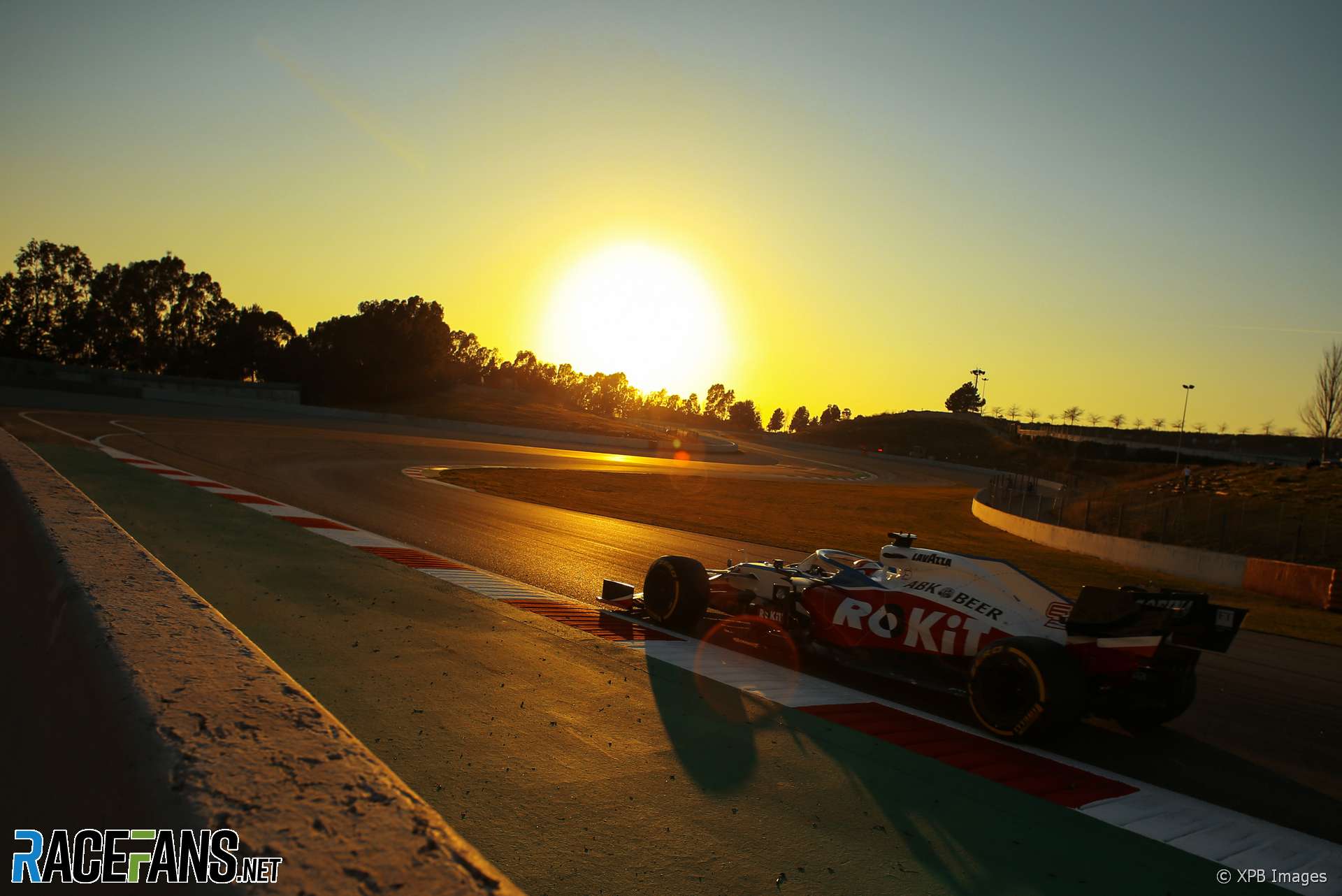
ColdFly (@)
25th March 2020, 12:52
Great article/reading.
Thank you @dieterrencken
Balue (@balue)
25th March 2020, 15:14
+1
Jere (@jerejj)
25th March 2020, 13:49
That Eau Rouge-Raidillon image, though.
Aussie Rod (@aussierod)
25th March 2020, 20:00
I had to pause on that too. If only, to go back in time and sit on the grass and watch… awesome.
Antz (@antznz)
25th March 2020, 14:25
Food for thought! I have a feeling we might lose a team before liberty acts to support those that are struggling. There are potential owners waiting in the wings so hopefully teams can be saved. I can’t see car sales doing well for a while, so I wouldn’t be surprised if Renault call it a day even if finances aren’t dire, F1 doesn’t seem a priority for current management. Uncertain times ahead for sure.
Phylyp (@phylyp)
25th March 2020, 15:25
You make a good argument that the big teams will now be suitably softened to agreeing to an even lower budget cap. I’d like to see that happen.
Not George
25th March 2020, 16:41
Who has signed up to the post-2020 Concorde Agreement? Will all sticking points be put aside for the “good of the Championship”?
I’m bemused by the reference to Aston Martin’s share price. It was recently described by a trader as a “clown car” stock that has no business being listed. From £19 to a low of £1.10 in just over a year. I remember Victor Gauntlett saying he nearly bit Ford’s arm off down to the ankle when they offered to buy it.
mmertens (@mmertens)
25th March 2020, 17:24
Dieter, articles like this shows you at your best! It’s really interesting and the way you use the quotes to open and close the article works really well. I’m glad you are able to actually provide us with all this insights and information on what is (and understandably so) pretty sterile environment ( motorsport news) at the moment. Now is a unique opportunity for the teams / commercial rights holder / FIA to make the necessary and overdue changes to make the sport we all love better. Let’s hope they’ll act accordingly.
anon
25th March 2020, 18:20
I have seen this line of argument being used several times:
Hence the suggestion from a rival that Ferrari’s chassis cannot lack speed despite comments to the contrary during pre-season tests, or the Scuderia would surely not have agreed to a freeze.
However, I have been wondering if that is necessarily the case in the current circumstances. It could be noted that Ferrari was one of the first teams which went into shutdown mode – whilst officially they started on the 19th March, they’d effectively already shut down their operations on the 16th – and the impact this virus has had in Italy has been particularly devastating so far.
To a certain extent, it may be that a freeze for Ferrari is a “least worst” choice, as they might instead drop even further behind if development work was not frozen.
Phylyp (@phylyp)
25th March 2020, 18:36
Good counterpoint, anon.
Dieter Rencken (@dieterrencken)
25th March 2020, 19:02
My point is that they were possibly sandbagging during testing, not whether they had suddenly found a second. Hence I specifically referenced their comments during testing. I have two sources on this – one a team boss whose team kept tabs on Ferrari, the other an Italian journo I trust. If you’re seeking conspiracy, then maybe they had sandbagged, and thus could go on shutdown early.
Jimmi Cynic (@jimmi-cynic)
25th March 2020, 19:23
Or… perhaps… Ferrari will be the only surviving team of the big 3, putting the F in F1 – winning both championships through to 2025.
Assuming F1 is still a thing in 2022 when F1 resumes racing with a 10 event calendar – 6 cars each for the remaining 3 teams. Ferrari, McLaren-Ferrari and Aston Martin-Ferrari.
anon
25th March 2020, 21:41
@dieterrencken it is not a conspiracy that I seek, more questioning some of the underlying assumptions to see whether they are necessarily valid.
There is inevitably going to be some degree of sandbagging – what I am questioning is whether it really is quite as much as some have suggested. The events of 2019 might cause some to question whether rivals are necessarily going to give an unbiased picture of the relative strength of a rival team, or whether they might want to make some teams appear more competitive than they actually are.
From that then flows the question of whether Ferrari would “surely not have agreed to a freeze” if the car was uncompetitive – that might be a logic that people might follow in normal times, but these are not normal times and especially not normal conditions in Italy right now.
I’m not saying they wanted to go on shutdown now – the comment about shutting down was the point that they were having to shut down activities as restrictions tightened in Italy and how life was rapidly changing into extremely abnormal conditions and people are facing very difficult questions to answer.
When you’re in a country which is currently particularly hit hard by covid-19, with cases rising by several thousand a day, and are in the process of arranging for your own staff to go into self-isolation whilst simultaneously preparing for a complete shutdown of your factory, are you really going to care quite as much that you’ve got to freeze the design of your car right now even if it is somewhat uncompetitive?
At some point, arguments about relative competitiveness are going to go be trumped by the necessity of survival, both on a personal level and on a commercial level. I’m not saying it’s a terrible car, but let’s be honest – I think Ferrari would be quite happy to live with a car that was, say, only third fastest given they’ve got higher priorities right now.
DB-C90 (@dbradock)
26th March 2020, 6:41
Great article as always.
Hopefully all teams, but particularly the big 3, will see that it’s in their interests to operate with a heavily reduced budget cap. Even reduced to 125m – most aren’t all that close once the exceptions are taken off.
Adverse times require cooperative thinking. Maybe for the first time in years we’ll see cooperation and intelligence and ultimately a better F1.